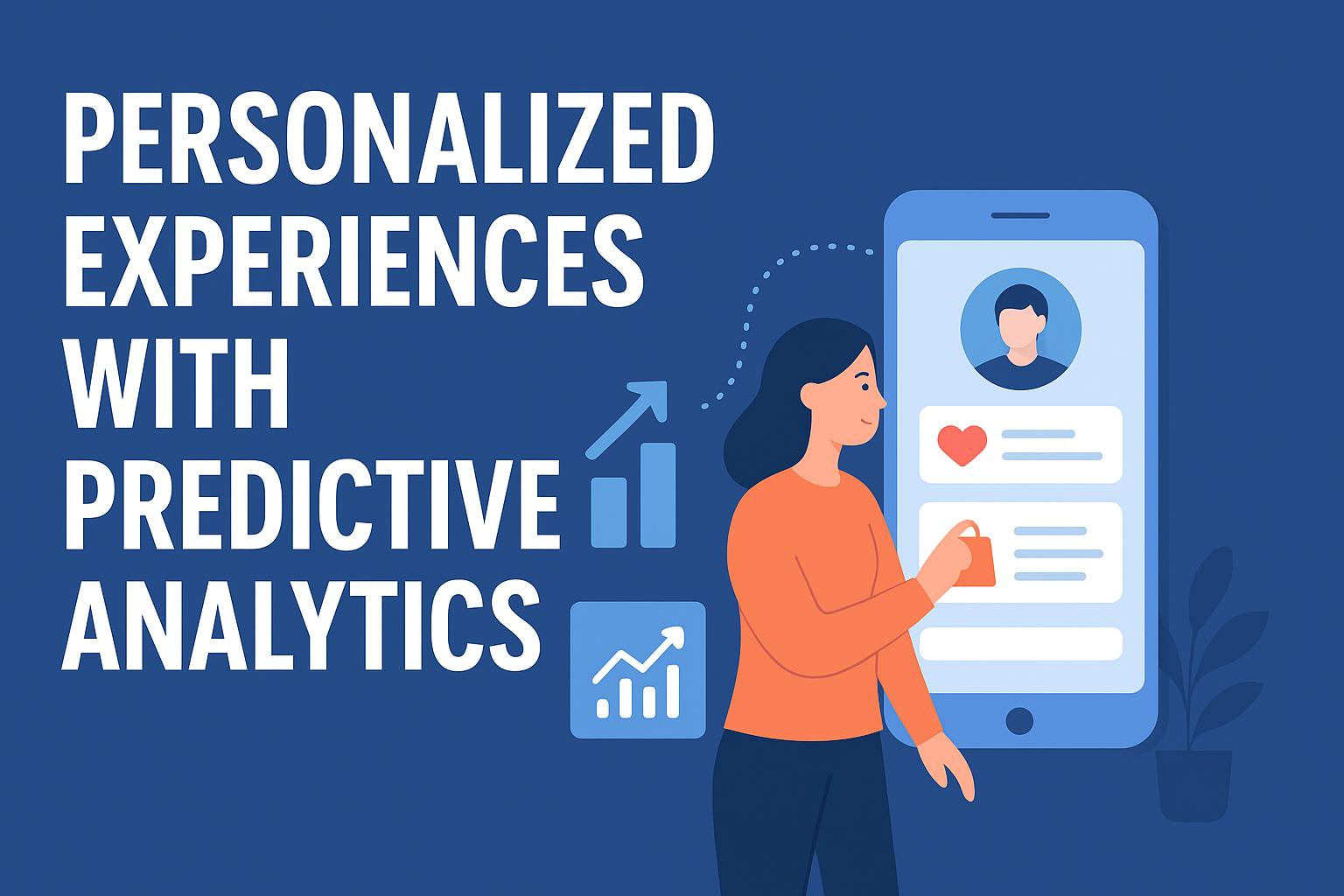Personalized Experiences with Predictive Analytics: Harnessing User Data for Smarter, More Relevant Apps

In the modern fast-paced digital era, people demand that their apps be intelligent, contextually relevant, and adaptive to their requirements. The days when one-size-fits-all was enough for a heterogeneous user base are over. The solution is predictive analytics—a technology that utilizes user data to foretell behavior, interests, and requirements, which allows apps to provide fully personalized experiences.
What is Predictive Analytics?
Predictive analytics applies statistical algorithms, machine learning algorithms, and past data to predict the future. In the case of apps, this translates into insights about user behavior, predictions of what they will do next, and serving up content, features, or recommendations ahead of time.
For example:
- A music app recommending songs based on listening patterns.
- A shopping app suggesting products before a user even searches for them.
- A health app alerting users to potential wellness risks based on their activity patterns.
How Predictive Analytics Enhances Personalization
Understanding User Behavior
By looking at clickstreams, session lengths, purchase history, and interaction patterns, apps can determine what a particular user likes. This information enables apps to focus on features or content that are relevant to individual preferences.
Anticipating Needs Before They Arise
Predictive analytics enables apps to proactively offer solutions, rather than reactively waiting for user input. For instance, a ride-hailing app can suggest destinations based on time, location, and historical travel patterns.
Dynamic Content Delivery
With predictive insights, apps can customize the user interface in real-time. This could mean personalized home screens, recommended articles, or product suggestions that evolve as user behavior changes.
- Understanding User Behavior
By looking at clickstreams, session lengths, purchase histories, and interaction patterns, apps can find out what each user likes. This understanding helps apps focus on features or content that match personal interests. - Anticipating Needs Before They Arise
Predictive analytics allows apps to offer solutions before users ask for them. For example, a ride-hailing app can suggest destinations based on the time, location, and past travel patterns. - Dynamic Content Delivery
With predictive insights, apps can customize the user interface in real time. This could mean personal home screens, recommended articles, or product suggestions that change as user behavior shifts. - Reducing Churn and Increasing Engagement
By predicting which users are likely to lose interest, apps can step in with focused notifications, offers, or support to keep valuable users.
Key Components for Implementing Predictive Personalization
- Data Collection: Collect behavioral, transactional, and demographic data in a responsible way. Make sure to follow privacy regulations like GDPR.
- Machine Learning Models: Use algorithms like regression, clustering, or neural networks to find patterns and predict behavior.
- Real-Time Analytics: Integrate predictive models into the app to provide instant, context-aware personalization.
- Feedback Loops: Continuously improve predictions by tracking outcomes and adjusting models for precision.
Challenges and Considerations
While predictive analytics holds enormous potential, implementing it comes with challenges:
- Data Privacy: Ensure user data is anonymized and used ethically.
- Data Quality: Predictions are only as good as the data—garbled or incomplete data can mislead models.
- Over-Personalization: Too much personalization can feel intrusive; balance predictive insights with user autonomy.
Real-World Success Stories
- Netflix uses predictive algorithms to recommend shows and movies, driving engagement and reducing churn.
- Amazon leverages purchase histories and browsing patterns to suggest products, increasing conversion rates.
- Spotify analyzes listening behavior to generate personalized playlists like “Discover Weekly,” enhancing user satisfaction.
The Future of Predictive Personalization
As AI and predictive analytics improve, apps will become smarter. They will anticipate user needs in ways that seem almost human. Voice assistants, augmented reality apps, and IoT devices will all gain from predictive insights. This will create seamless and personalized experiences that connect with users.
Conclusion
Predictive analytics changes apps from tools that respond to ones that anticipate. These apps can understand users and provide value instantly. By using data responsibly and wisely, businesses can create smarter, more relevant apps that please users, increase engagement, and foster long-term loyalty.